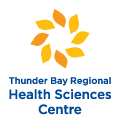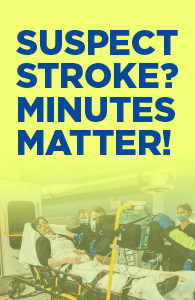Medication Compliance: It’s a pretty big deal

Prescription medications have been linked to keeping individuals in their home longer through the prevention of complications from chronic illnesses, such as a stroke; however, many still do not take them as directed by their physician. In fact, a recent study showed that in heart attack patients there was a 25% increased risk of death if the individual was not taking their statin medication, which is used to reduce bad cholesterol1. This non-compliance has become a problem that has affected the western world, especially as new technology is developed to treat the acute process of disease. For example, a patient who is suffering from a stroke due to a blood clot can receive a clot busting drug called tPA. This will dissolve the clot and restore blood flow to the brain, but the medication does not treat the underlying reason for the clot entering the brain. At this time, physicians may need to resort to long-term medication therapy.
Chronic diseases such as a stroke, heart failure or chronic obstructive pulmonary disease (COPD) have been shown to require an increased use of prescribed medication. In fact, 9 out of 10 of these patients are prescribed at least one medication2. However it is estimated that only 50% of all individuals take the medications as prescribed3. Medication education for the stroke patients is of fundamental importance as the goal in acute care is to have them discharged to an appropriate care area within 5 days. Furthermore, stroke survivors can often have difficulty with memory, which can cause further issues with medication compliance.
Prescription medications may not always be covered by Ontario Health Insurance Plan (OHIP), provincial drug benefit coverage varies across provinces. Prescriptions may need to be paid for out-of-pocket if the patient does not have adequate insurance for drug coverage or the medication is not covered by OHIP. In fact, 1 in 10 Canadians state that they cannot take their medications as prescribed due to the costs associated with prescriptions4. This is a rising issue in rural areas, such as Northwestern Ontario, as many individuals have difficulties with rising costs of living. Individuals were placed at a higher risk for not taking their medications if 5% of their household income went to prescription medications5. Therefore, it is important that the patient, physician and health care team discuss the cost of medications and the patient’s comfort with paying for their prescriptions.
Another issue with prescribed medications is the patient’s belief regarding the medication itself. In patients who have suffered a transient ischemic attack (TIA), 1 out of 4 patients who are not taking their medications as prescribed state that they feel concerned about becoming dependent on the medication or they worry about long-term consequences6. Other studies have shown that patients do not feel that they require the drug7. Therefore, patient education on medications becomes a vital component to helping patients after discharge. Benefits of education have been shown especially with stroke survivors as 1 out of 4 had stopped taking their oral anticoagulant, such as warfarin, due to non-medical reasons8.
Studies have shown that almost 1 out of every 4 patients who have had a stroke, stopped taking their oral anticoagulant.
Major Predictors of Poor medication Adherence can be linked to:
| Patient related limitations | Barriers to Care or Medicine |
| Psychological problems, particularly depression | Poor relationship between patient and provider |
| Cognitive impairment | Missed appointments |
| Asymptomatic disease | Lack of health insurance |
| Inadequate follow-up or discharge planning | Cost of copayment or coinsurance |
| Side effects of medicine | Complexity of treatment |
| Patient lacks belief in benefit of treatment | Access restrictions |
| Patient lacks insight into the illness | Poor relationship between patient and provider |
| Oslerberg, L., & Blaschke, T. (2005) Adherence to medicine. New England Journal of Medicine. | |
The question remains, what can health care providers do to help patients understand the requirements of following the medications as prescribed? MedsCheck is a program that allows individuals to set up a meeting with their pharmacist in the community or possibly at home, if they are taking three or more prescription medications for ongoing chronic conditions, are diagnosed with diabetes, or are a resident of a long-term care home and can be done once a year9.
Patient education by a hospital pharmacists prior to discharge regarding new medications prescribed post-stroke or TIA, increases the likelihood that the patient will remain adherent to the medication regimen. This can be seen in the vital work by Gilmer, Sweeney & Nakajima (2016) that showed the importance of the pharmacist role in hospital initiative to becoming a stroke centre10.
Additional strategies:
| Enabling strategies – Equip the patient to be compliant |
| · Counseling on social issues
· Patient education |
| Consequence Strategies – reinforcing compliant behaviour |
| · Record when pills were taken |
| Stimulant strategies – Prompt pill taking |
| · Taking medications with daily rituals
· Drug packaging (e.g., blister packs) |
| Compliance Aids |
| · Addressing issues such as one-sided weakness when patient is required to use vials that have screw tops or locking mechanisms |
| Coleman, D. J. (2005) Medication compliance in the elderly. Journal of Community Nursing. 19(8). 4-6 |
Medication compliance and adherence is a hallmark to providing patient care while the patient is in an acute care setting as well as the community. It is important that the patient and healthcare provider have a discussion regarding prescribed medications and the need for continuing therapy. This can lead to the prevention of complications from a disease, such as stroke, and improved quality of life.
- Rasmuseen, J. N., Chong, A., & Alter. D. A. (2007) Relationship between adherence to evidence-based pharmacotherapy and long-term mortality after acute myocardial infarction. Journal of the American Medical Association. 297. 177-186.
- F., Morrison, H., Liepold, H., & Underhill. L. (2011) Drug utilization in Canadian patients with major chronic diseases. American Journal of Pharmacy Benefits. 3(3). e42-50
- World Health Organisation. (2003) Adherence to long term therapies: evidence for action.
- Law, M. R., Daw, J. R., Cheng. L., & Morgan. S. G. (2013) Growth in private payments for health care by Canadian households. Health Policy. 110(2-3) 141-146
- Hennessy, D., Sanmartin, C., Ronksley, P., Weaver, R., & Campbell, D. (2016) Out-of-pocket spending on drugs and pharmaceutical products and cost-related prescription non-adherence among Canadians with chronic disease. Health Reports. 27(6). 3-8.
- Kronish, I. M., Diefenbach, M. A., Edmondson, D. E., Phillips, L. A., & Fei, K. (2013) Key barriers to medication adherence in survivors of strokes and transient ischemic attacks. Journal of General Internal Medicine. 28(5). 675-682.
- Sjolander, M., Eriksson, M., & Glader, E. (2013) The association between patients’ beliefs about medicine and adherence to drug treatment after stroke: A cross-sectional questionnaire survey. 3(9). 1-8
- De Schryver, E. L., van Gijn, J., Kappelle. L. J., Koudstaal, P. J., Algra. A. (2005) Non-adherence to aspirin or oral anticoagulants in secondary prevention after ischaemic stroke. Journal of Neurology. 252. 1316-1321.
- Ontario(2016) Taking your medications safely. Retrieved from https://www.ontario.ca/page/take-your-medication-safely
- Gilmer, A., Sweeney, L., & Nakajima, S. (2016) Pharmacists’ role in a hospital’s initiatve to become a certified primary stroke center. American Journal of Health-System Pharmacy. 73(s1). S1-S7






